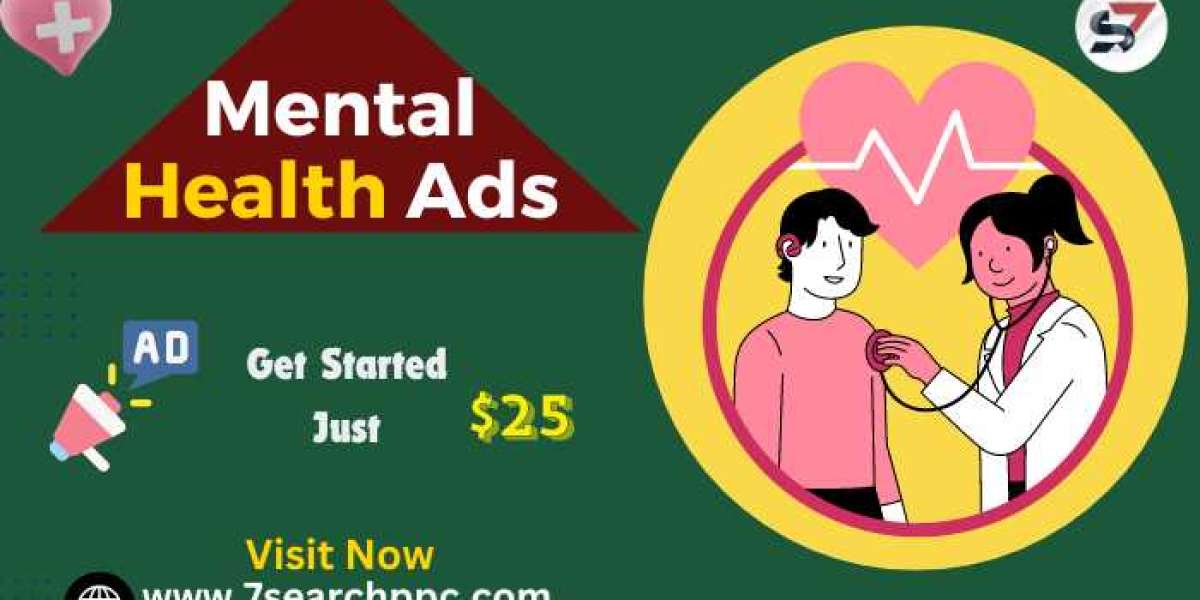Mental health has always been a critical aspect of overall well-being, yet it remains one of the most misunderstood and stigmatized areas of health. In recent years, mental health ads have played a pivotal role in shaping public perception and bringing attention to this important issue.
These ads are not just about promoting services but are also about educating the public, reducing stigma, and encouraging open conversations. So, how do mental health ads influence public perception? Let's dive into this multifaceted topic and explore the various dimensions.

Understanding Mental Health Ads
Definition and Purpose
Mental health ads are promotional materials designed to increase awareness about mental health issues, provide information on mental health services, and reduce the stigma associated with mental illnesses. The primary purpose is to create a more informed and compassionate society that understands the importance of mental well-being.
Types of Mental Health Ads
Mental health ads come in various forms, including:
- Television commercials
- Online advertisements
- Print media ads
- Social media campaigns
Historical Context of Mental Health Advertising
Evolution Over the Decades
Mental health advertising has evolved significantly over the past few decades. Initially, such ads were rare and often depicted mental health in a negative light. Over time, there has been a shift towards more positive and supportive messaging. This evolution reflects broader changes in societal attitudes towards mental health.
Impact of Historical Ads on Public Perception
Historical ads often reinforced negative stereotypes about mental health, contributing to stigma and misunderstanding. Modern ads, however, aim to counteract these stereotypes by promoting empathy, understanding, and acceptance.
Psychological Impact of Mental Health Ads
Positive Influences
Mental health ad can have several positive influences:
- Increased Awareness: Educating the public about mental health issues.
- Reduced Stigma: Normalizing mental health discussions and reducing shame.
- Encouragement to Seek Help: Motivating individuals to seek professional support.
Negative Influences
However, there can also be negative influences:
- Over-simplification: Ads may oversimplify complex mental health issues.
- Triggering Content: Certain ads might inadvertently trigger distress in vulnerable individuals.
Key Elements of Effective Mental Health Ads
Emotional Appeal
Ads that evoke strong emotions are more likely to resonate with audiences. Stories of personal experiences, struggles, and triumphs can create a powerful connection.
Informational Content
Providing accurate and useful information is crucial. This includes symptoms to look out for, where to seek help, and ways to support loved ones.
Visual and Audio Elements
The use of compelling visuals and sound can enhance the message. Visual metaphors, soothing music, and engaging graphics can make the ad more memorable.
Online Medical Ads and Mental Health
Rise of Digital Platforms
The rise of digital platforms has transformed how mental healthcare Advertising are delivered. Social media, websites, and streaming services offer new avenues for reaching a broader audience.
Advantages of Online Medical Ads
Online medical ads offer several advantages:
- Targeted Advertising: Reaching specific demographics based on data analytics.
- Interactive Content: Engaging audiences through interactive elements like quizzes and videos.
- Cost-Effectiveness: Lower costs compared to traditional advertising mediums.
Challenges in Mental Health Advertising
Stigma and Misconceptions
One of the biggest challenges is combating the stigma and misconceptions associated with mental health. Ads must be carefully crafted to avoid reinforcing negative stereotypes.
Balancing Sensitivity with Engagement
Creating engaging content while maintaining sensitivity is another challenge. Ads must strike the right balance to be effective without being offensive or distressing.
The Role of Influencers in Mental Health Promotion
Leveraging Social Media Personalities
Influencers play a significant role in mental health promotion. Their reach and relatability can amplify the impact of mental health ads, making them more accessible to a younger audience.
Authenticity and Trust
Authenticity is key. Audiences are more likely to trust and engage with content that feels genuine and relatable. Influencers who share their own mental health journeys can make a significant impact.
Impact of Mental Health Ads on Different Demographics
Age Groups
Different age groups respond differently to mental health ads. For instance, younger audiences might engage more with digital and social media content, while older demographics might prefer traditional media like TV and print.
Socioeconomic Status
Socioeconomic status also influences how mental health Advertising are received. Ads must be tailored to address the specific needs and challenges of different socioeconomic groups.
Measuring the Effectiveness of Mental Health Ads
Metrics and Tools
Effectiveness can be measured using various metrics and tools:
- Engagement Rates: Likes, shares, comments, and views.
- Surveys and Feedback: Collecting audience feedback to gauge impact.
- Conversion Rates: Tracking how many people seek help or support services after viewing an ad.
Interpreting Data for Improvements
Interpreting this data helps refine future campaigns. Understanding what works and what doesn't is crucial for continual improvement.
Future Trends in Mental Health Advertising
Emerging Technologies
Emerging technologies like virtual reality (VR) and augmented reality (AR) are set to revolutionize mental health advertising. These technologies offer immersive experiences that can educate and engage audiences in new ways.
Predicted Shifts in Public Perception
As mental health continues to gain attention, we can expect a shift towards more open and supportive public attitudes. Display advertising will likely become more inclusive, diverse, and focused on holistic well-being.
Conclusion
Mental health ads play a crucial role in shaping public perception. They have the power to educate, reduce stigma, and encourage individuals to seek help. As we move forward, it is essential to create ads that are authentic, empathetic, and effective in reaching diverse audiences. The future of mental health advertising holds promise, with emerging technologies and more inclusive approaches paving the way for a more understanding and supportive society.
FAQs
Q1. How do mental health ad influence public perception?
Ans: Mental health ad help shape public perception by raising awareness, reducing stigma, and encouraging individuals to seek help. These ads promote understanding and compassion towards mental health issues.
Q2. What role do medical advertising networks play in mental health Advertising?
Ans: Medical advertising networks connect advertisers with relevant audiences, ensuring that mental health ads reach those who need them most. They use data and analytics to optimize ad placement and effectiveness.
Q3. What are the advantages of online medical ads for mental health?
Ans: Online medical ads offer targeted advertising, interactive content, and cost-effectiveness. They leverage digital platforms like social media and websites to reach a broader, more engaged audience.
Q4. How can mental health ad be effectively integrated into medical promotion?
Ans: Mental health ad can be integrated into medical promotion by using emotional appeal, accurate information, and compelling visuals. These elements help create impactful ads that resonate with the audience.
Q5. What challenges do advertisers face when promoting mental health ads?
Ans: Advertisers face challenges such as combating stigma, balancing sensitivity with engagement, and avoiding reinforcement of negative stereotypes. Creating ads that are both effective and respectful is crucial for success.








